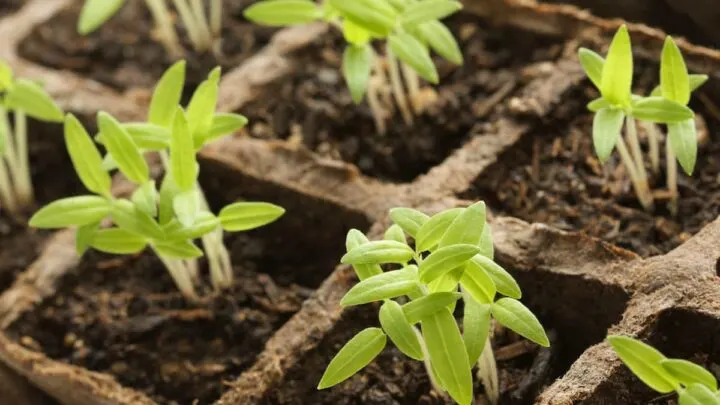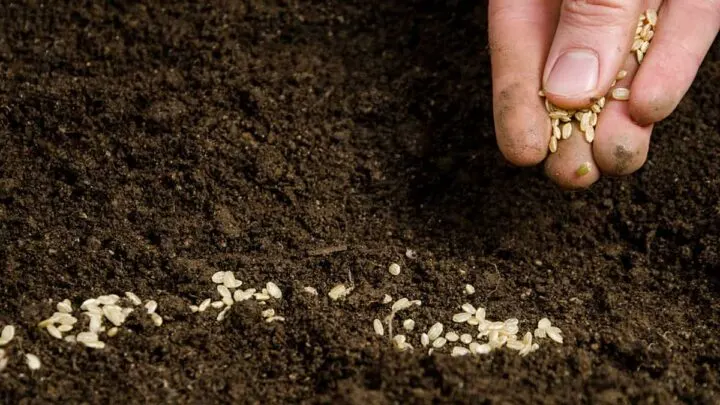If this is your first time starting a garden from seedlings, it is important to note that it is a bit more complex than raising a garden from pre-established plants that you transplant. Gardening of any nature is a learning and growing process. Seedlings are more vulnerable to growing fuzzy mold that causes the new sprouts to decay and die. You may be wondering: Will the mold prevent my seedlings from germinating? What, if anything, can I do to help it recover? Can the mold be prevented?
Unfortunately, once the mold has begun to grow over your seedlings, there is little chance of survival. Mold growing on the soil surface causes a crust to form, preventing water from penetrating the soil and the seedling from germinating.
On the bright side, you can do several preventative things to protect your seedlings from developing mold.
Now that you know your plant will likely not survive mold growth, let us dive into what causes mold growth, what to do if your plants become infected, and how to prevent it.

Three leading causes of mold growth on seedlings
This disease is caused by a mold or fungus that thrives in cold, damp conditions. Seeds that started off being planted indoors are prone to contract a disease called ‘damping off’ disease. High humidity, overwatering, overcrowding, and poorly ventilated seeding trays can also cause mold to grow. Damping-off affects several diverse kinds of vegetables and flowers.
1. High humidity
Seedlings that are started in greenhouses, in plastic domes or mini-greenhouses, or in homes with little air circulation are prone to mold growth. With no air circulation, the soil is prone to growing mold. Running a small fan can help circulate the air.
2. Overcrowding
If seedlings are planted too tightly in a tray or in small pots, they need to be replanted or moved to a roomier habitat once they begin to sprout. If left with little to no room to grow, they will not get proper ventilation, which can cause mold to grow. Seedlings need space for their roots to breathe, grow deep, and provide room for their stems to grow strong.
3. Overwatering
Overwatering can lead to mold growth, as it causes the soil to absorb and hold substantial amounts of water. Seedling’s roots are very shallow and prefer light, frequent watering rather than heavy deep watering. Mold and fungi thrive in wet conditions. Overwatering can also cause your sprouting seedlings to soak up copious amounts of water and drown, turning brown, squishy, and moldy.
Identifying the mold
A fuzzy mold that can appear white, grey, or black can often grow on top of the soil of seedlings and newly sprouted plants. It causes a plant to drown, preventing root growth and causing your plant to become soft and mushy. From this point, there is not much hope for survival for that plant. If there are other plants or seeds around the infected ones, there may be a chance to save them if the mold has yet to spread that far.

Can moldy seedlings be treated?
It is possible to try to treat the spread of mold. However, it is important to realize that preventing the mold is much easier than trying to treat it once it has infected your plants. If you catch it early enough, there may be time to save some, if not most, of your seedlings.
- Removing the mold – It is possible to gently attempt to remove the mold off the top of the soil by scraping it off.
- Ventilate – Ensure that you properly ventilate your flat or pots. If you have a dome or a lid over your seedling tray, use a small stick or a pencil to prop it up without fully removing it.
- Avoid overwatering – If mold has grown due to overwatering, let your soil dry out before watering again. If there are no drain holes at the bottom of your tray, be sure to not overwater by checking the soil surrounding your seedling. It should never be soggy and should be evenly moist.
By carefully removing the mold, providing better ventilation to your seedlings, and prudently measuring your watering, your baby plants might have a chance. The surviving plants will often have stunted growth and may not yield to their full capacity, but they should germinate if saved in time.

How to prevent mold from growing
There are several preventative measures you can take to help you avoid mold growth on your seedlings and soil.
- Proper air circulation – It is helpful to keep a fan blowing on the low setting, oscillating over your seeds throughout the day. This will help provide ventilation and air circulation to avoid humid, stagnant air. However, watch your soil’s moisture levels because the fan will dry out your soil quicker.
- Proper soil – Ensure you are using the appropriate soil for seedlings. They require much lighter, less dense, fast-draining soil to grow properly.
- Disinfect – Be sure to clean not only your growing trays and pots but also your gardening tools. Mold spores may still remain dormant on them from previous years.
Be proactive when you are planting and raising seedlings rather than reactive. It is much easier to prevent mold before it happens. It is also significantly better for your seedlings to prevent the mold instead of trying to rescue them from it.
In summary
The leading causes of mold growth, or in other words, damping off disease, in seedlings is high humidity, overcrowding, and overwatering. As we have learned in this article, it is best to remain initiative-taking when planting and growing seedlings rather than reactive.
However, it is possible to treat moldy seedlings to rescue them. Your best option is to be diligent in preventing the mold from ever starting by providing proper air circulation from the beginning, using appropriate lightweight soil, and disinfecting your tools and trays.

Hi there, my name is Allie and welcome to my blog; GareningWithAllie!
Much of what you see written here is just our personal experiences with gardening. Along with the content I write here, there is also a unique collection of gardening topics covered by some of our close friends. I hope you find everything you read here to be helpful, informative, and something that can make your gardening journey the most lovely experience ever! With that said, Happy Gardening!
